Vauxhall Combo Cargo vs Volvo XC90 – Differences & prices compared
Compare performance, boot space, consumption and price in one view.
Find out now: which car is the better choice for you – Vauxhall Combo Cargo or Volvo XC90?
The Vauxhall Combo Cargo (Cargo Van) comes with a Diesel, Petrol or Electric engine and Manuel or Automatic transmission. In comparison, the Volvo XC90 (SUV) features a Petrol MHEV or Plugin Hybrid engine with Automatic transmission.
When it comes to boot capacity, the Vauxhall Combo Cargo offers , while the Volvo XC90 provides 302 L – depending on how much space you need. If you’re looking for more power, decide whether the 136 HP of the Vauxhall Combo Cargo or the 455 HP of the Volvo XC90 suits your needs better.
In terms of consumption, the values are 17.40 kWh5.20 L per 100 km for the Vauxhall Combo Cargo, and 3.50 L for the Volvo XC90.
Price-wise, the Vauxhall Combo Cargo starts at 22400 £, while the Volvo XC90 is available from 68500 £. Compare all the details and find out which model fits your lifestyle best!
Vauxhall Combo Cargo
The Opel Combo van is a versatile and practical choice for both businesses and families, offering ample space and comfort. Its efficient design provides ease of manoeuvrability in urban settings, while also delivering a smooth and reliable performance on longer journeys. The interior is thoughtfully equipped with modern features, ensuring a convenient and enjoyable driving experience.
detailsVolvo XC90
The Volvo XC90 stands out with its elegant Scandinavian design, seamlessly blending luxury with versatility. Inside, it offers a spacious and meticulously crafted interior, showcasing high-quality materials and advanced technology. The vehicle provides a comfortable and smooth driving experience, making it a popular choice for families and long journeys.
details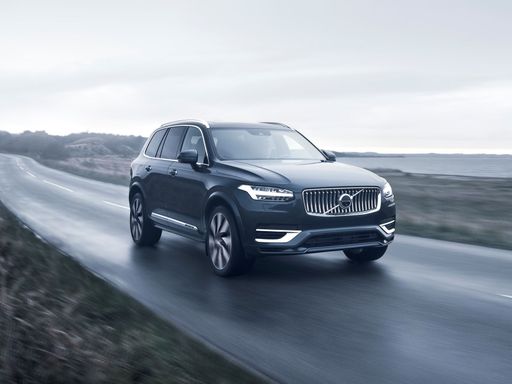 @ media.volvocars.com
@ media.volvocars.com
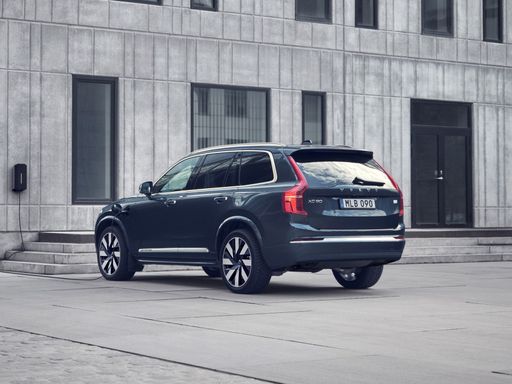 @ media.volvocars.com
@ media.volvocars.com
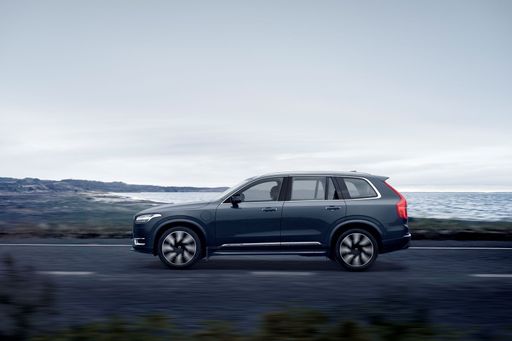 @ media.volvocars.com
@ media.volvocars.com
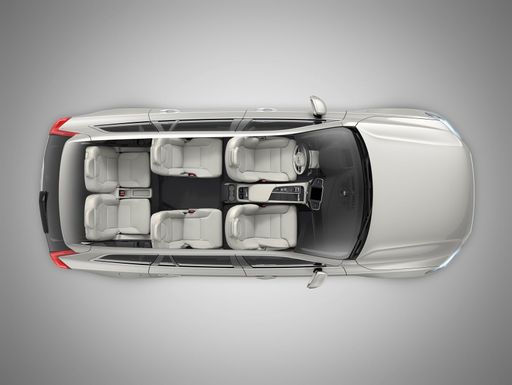 @ media.volvocars.com
@ media.volvocars.com
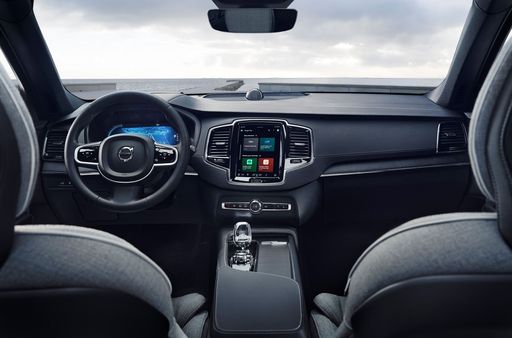 @ media.volvocars.com
@ media.volvocars.com

|
|
|
|
|
Costs and Consumption |
|
|---|---|
|
Price
22400 - 34700 £
|
Price
68500 - 81300 £
|
|
Consumption L/100km
5.2 - 6.3 L
|
Consumption L/100km
3.5 - 8.5 L
|
|
Consumption kWh/100km
17.40 kWh
|
Consumption kWh/100km
-
|
|
Electric Range
354 km
|
Electric Range
71 km
|
|
Battery Capacity
-
|
Battery Capacity
14.70 kWh
|
|
co2
0 - 143 g/km
|
co2
79 - 191 g/km
|
|
Fuel tank capacity
53 - 61 L
|
Fuel tank capacity
71 L
|
Dimensions and Body |
|
|---|---|
|
Body Type
Cargo Van
|
Body Type
SUV
|
|
Seats
2 - 6
|
Seats
7
|
|
Doors
4 - 5
|
Doors
5
|
|
Curb weight
1329 - 1813 kg
|
Curb weight
2080 - 2297 kg
|
|
Trunk capacity
-
|
Trunk capacity
262 - 302 L
|
|
Length
4401 - 4751 mm
|
Length
4953 mm
|
|
Width
1848 mm
|
Width
1923 mm
|
|
Height
1820 - 1825 mm
|
Height
1771 mm
|
|
Payload
611 - 991 kg
|
Payload
653 - 710 kg
|
Engine and Performance |
|
|---|---|
|
Engine Type
Diesel, Petrol, Electric
|
Engine Type
Petrol MHEV, Plugin Hybrid
|
|
Transmission
Manuel, Automatic
|
Transmission
Automatic
|
|
Transmission Detail
Manual Gearbox, Automatic Gearbox
|
Transmission Detail
Automatic Gearbox
|
|
Drive Type
Front-Wheel Drive
|
Drive Type
All-Wheel Drive
|
|
Power HP
102 - 136 HP
|
Power HP
250 - 455 HP
|
|
Acceleration 0-100km/h
11.20 s
|
Acceleration 0-100km/h
5.4 - 7.7 s
|
|
Max Speed
135 - 183 km/h
|
Max Speed
180 km/h
|
|
Torque
205 - 300 Nm
|
Torque
360 - 709 Nm
|
|
Number of Cylinders
3 - 4
|
Number of Cylinders
4
|
|
Power kW
75 - 100 kW
|
Power kW
184 - 335 kW
|
|
Engine capacity
1199 - 1499 cm3
|
Engine capacity
1969 cm3
|
General |
|
|---|---|
|
Model Year
2024
|
Model Year
2024 - 2025
|
|
CO2 Efficiency Class
E, A
|
CO2 Efficiency Class
G, B
|
|
Brand
Vauxhall
|
Brand
Volvo
|
Vauxhall Combo Cargo
Discovering the Opel Combo: A Compact Van with Big Capabilities
The Opel Combo is a standout in the realm of compact vans, offering a blend of practicality, efficiency, and advanced technology. Whether you are a small business owner in need of a reliable transport solution or an eco-conscious driver looking for a green alternative, the Opel Combo has something to offer. Let's delve into the technical details and innovations that make this van a noteworthy contender in its class.
Engine Options: Flexibility Meets Efficiency
The Opel Combo boasts a wide range of engine options to cater to various driving needs. Available in both diesel and petrol, as well as electric versions, the Combo offers a versatile selection of powertrains. With engine power ranging from 102 PS to an impressive 136 PS, the Combo ensures that you have enough oomphto get the job done.
The diesel variants present efficient fuel consumption statistics, with figures between 5.4 to 5.9 L/100 km, ensuring fewer stops at the fuel station. Meanwhile, the electric models offer an attractive alternative with a range of 326 to 336 km on a single charge, emphasizing Opel's commitment to sustainable mobility.
Innovative Technology: A Step Forward
Innovation in the Opel Combo is not just limited to its engines. It incorporates state-of-the-art features designed to enhance the driving experience. Automatic transmission options provide smooth gear transitions, reducing driver effort and fatigue, especially in urban settings. A key technological highlight is the inclusion of advanced driver assistance systems which enhance safety and ease of use.
The Combo's infotainment system is equipped with all the modern connectivity options, making it easy for users to stay connected on the go. With intuitive controls and an ergonomic layout, the system enhances the overall driving experience by keeping essential functions accessible at all times.
Design and Practicality: Structured for Success
Opel has masterfully balanced form and function in the Combo's design. With a compact exterior measuring between 4401 to 4753 mm in length, the Combo is perfect for navigating urban environments without sacrificing cargo space. The van offers a generous payload capacity of up to 916 kg, demonstrating its ability to handle demanding logistical tasks.
Inside, the Combo provides comfort and practicality with seating configurations ranging from 2 to 6 seats. This flexibility makes it ideal for both goods transport and ferrying staff. With a maximum speed of up to 184 km/h, the Combo ensures timely deliveries while maintaining Opel's standard for safety and efficiency.
Environmental Considerations: Efficient and Responsible
The Opel Combo manages to balance power and environmental responsibility efficiently. CO2 emissions range from 0 for electric variants to a moderate 155 g/km for certain diesel configurations. These figures demonstrate Opel's dedication to reducing the environmental footprint of its vehicles.
Moreover, the Combo Electric models, with energy consumption as low as 18.6 kWh/100 km, prove that Opel is committed to offering cleaner, alternative fuel vehicles that meet modern environmental standards.
Conclusion: A Compact Van That Packs a Punch
The Opel Combo emerges as a versatile and innovative choice in the compact van segment, blending efficiency, technology, and practicality seamlessly. For those searching for a reliable partner in business or an eco-friendly transport solution, the Combo stands out as a compelling choice. With a price range that accommodates various budgets, the Opel Combo deserves serious consideration from anyone in need of a robust yet refined transport solution.
Volvo XC90
Introduction to the Volvo XC90: The Pinnacle of Swedish Innovation
The Volvo XC90 continues to uphold the Swedish car manufacturer’s reputation for delivering sophisticated and reliable vehicles. Known for its impressive blend of luxury, technology, and safety, the 2024 model year introduces updates that maintain its status as a leading luxury SUV. With options ranging from mild-hybrid to plug-in hybrid variants, the XC90 caters to a diverse array of needs and preferences.
Engine Options and Performance
The Volvo XC90 is available in both petrol mild-hybrid and plug-in hybrid configurations. The mild-hybrid version boasts a robust 250 PS, while the plug-in hybrid variant offers an astounding 455 PS. This range of powertrains ensures that drivers experience both efficient performance and the capability to tackle a variety of driving conditions.
Efficiency and Environmental Responsibility
One of the standout features of the Volvo XC90 is its commitment to environmental efficiency. The plug-in hybrid model achieves a remarkable fuel consumption rate of just 1.2 L/100km and an electric-only range of up to 71 km. These capabilities showcase Volvo’s dedication to reducing carbon emissions and promoting sustainable driving without compromising performance.
Cutting-Edge Safety Features
Volvo cars are synonymous with safety, and the XC90 is no exception. Incorporating advanced safety innovations such as Pilot Assist, City Safety with Autobrake, and Lane Keeping Aid, the XC90 provides drivers with confidence and peace of mind. These systems work together seamlessly to prevent accidents and protect passengers.
Luxurious Interior and Comfort
Step inside the Volvo XC90, and you'll be greeted by a meticulously crafted interior designed for comfort and convenience. The SUV accommodates up to seven passengers with ease, offering a spacious cabin and premium materials. Elegant designs, advanced infotainment technology, and premium sound systems transform every journey into a luxurious experience.
Price and Specifications
The Volvo XC90 is competitively priced, with a range starting from €79,890 up to €94,890, depending on the chosen configuration and features. Its dimensions, with a length of 4953 mm, width of 1923 mm, and height of 1771 mm, provide a substantial presence on the road. The luggage capacity ranges between 262 to 302 litres, allowing for flexibility depending on passenger and cargo needs. Equipped with an automatic transmission and all-wheel drive, the XC90 delivers a smooth and stable ride.
Conclusion: The Epitome of Modern SUV Design
The Volvo XC90 stands out as a top contender in the luxury SUV market, blending advanced technology, unparalleled safety, and luxurious comfort. Whether you choose the fuel-efficient plug-in hybrid or the reliable mild-hybrid version, the XC90 demonstrates Volvo's commitment to innovation and excellence. It remains a favourite among discerning drivers seeking a vehicle that embodies both style and substance.
Which drive types are available for the Vauxhall Combo Cargo?
Available as Front-Wheel Drive.
The prices and data displayed are estimates based on German list prices and may vary by country. This information is not legally binding.
